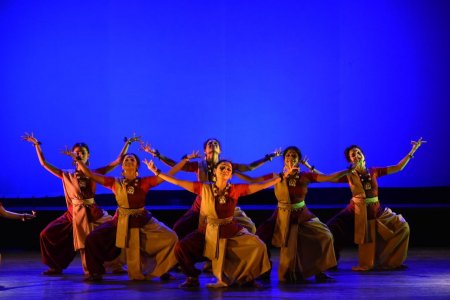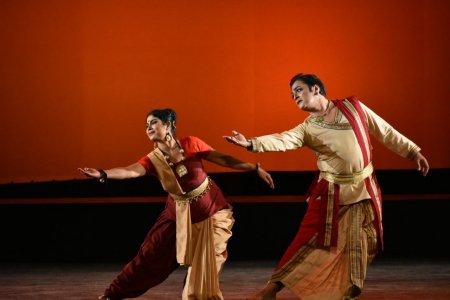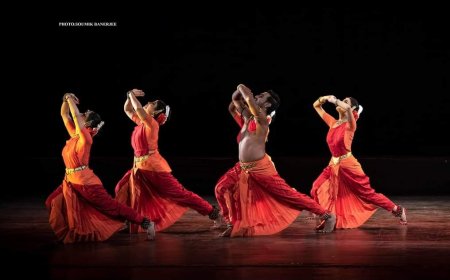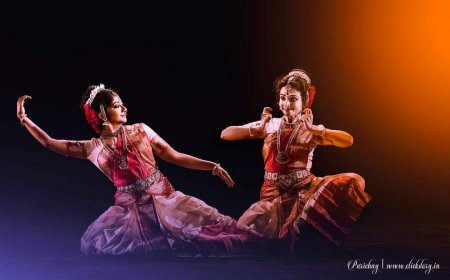
|   |

|   |
 e-mail: ukb7@rediffmail.com Bengal's Milton - icon of rebellion October 28, 2021 The great saint Adi Shankara prophesied: It's better blazing for a moment and disappear, / Than go on smoking over many a year... His own life span of less than 40 years -- with a remarkably eventful itinerary spanning the entire land -- was itself a case in point. Some eight hundred years later, appeared Bengal's Michael Madhusudan Dutt whose social and literary career of 49 years was no less trail blazing in the nineteenth century. Early in college days, his yearning for the West made him write: Where man in all his truest glory lives /And nature's face is exquisitely sweet /For those fair climes I heave impatient sigh / There let me live and there let me die ... Madhusudan spent a roller-coaster literary life of a quarter century from 1849 onwards full of trials and tribulations, turning to Christian religion and discarding Hinduism; travelling to England and returning disheartened; writing English poetry and collecting only ‘rejection slips' from the British magazines; becoming a gifted linguist, having studied English, Bengali, Hebrew, Latin, Greek, Tamil, Telugu and Sanskrit; and spending his sunset years to produce some of the best drama and satires that ever existed in Bengali. But his finest moment was yet to come which was to catch on the poetic style of John Milton of the early 17th century - largely grounded in his poems Paradise Lost, Paradise Regained and Samson Agnistes -- composed in Blank Verse. Madhusudan emulated Milton's iambic pentameter and penned his celebrated Bengali trilogy: Tilottama Sambhava Kavya (1861), Meghnad Badh Kavya (1861), Brajagana Kavya (1861) and Veerangana Kavya (1861). Out of them, the most famous was Meghnad Badh Kavya which turned the iconic epic Ramayana on its head, making Ravana and his son Indrajit noble characters. This was probably the eternally rebel poet Madhusudan's last laugh! 

Jugo Prabortak Madhukovi (The Epoch-Maker Poet Madhu) presented on September 29 was a dance drama by Jodhpur Park Saraswat Sanskriti Kendra and directed by Kabita Chatterjee and Shubhasis Dutta. Founded by the eminent Bharatanatyam dancer Anita Mallick in 1984, the Kendra has been producing many significant events over the last few decades, with current production on the Madhusudan Manch, named after the poet himself! Here is how the production was viewed by the Kendra: "In the arena of Bengali literature, Michael Madhusudan Dutt is considered as an unparalleled talent responsible for bringing on the Renaissance in literature written in Bengali language. Born in 1828, he was a poet, a dramaturge and a farce writer. Attracted by the Western culture, he converted from Hindu religion to Christianity during his youth and started producing his literary works in English language. In his early life, Dutt married and divorced an English lady Rebecca McTavish Thompson. Later, a French woman Emilia Henrietta Sofia became his second wife. During the second phase of life, the poet focussed on writing Bengali literature. His credentials for creating Sonnet in Bengali language and inventing Blank Verse, a rhyming pattern of poem, are well founded. His personal life was more dramatic and full of heart-rending sagas. The great poet and playwright died prematurely in 1873." The dance-drama was presented in what is known in Kolkata as the "creative" style, a take-off on modern dance in the decades from 1940's onwards. In the Kendra's production, the style looked stilted and inept improvisations all through. Beginning with the rousing choral patriotic song: Why the misery, why penury, what's the shame and what's the pain..., the tone changed to Madhusudan's poetic pleading to his land to remember him even when he would go abroad. The patriotism was reinforced by another group dance to Tagore's famous lyric: O my country's haloed land, I bow down my head to your sacred touch... This was followed by recitations, play-acting, and dance, mainly by an effort to bring out Madhusudan's literary persona that loved Bengal and played rich tributes to his motherland. The seminal influence on him by the principal of Hindu College and the overall impact of literary English luminaries like Shakespeare, Wordsworth, Byron, Milton, Shelley, Keats and others were highlighted then, but was this not anachronistic before his falling back on his own indigenous culture? Recitations of the poet's compositions were, however, the stronger part of the entire dance-drama than the improvisational creative dance. Rebecca, the 18-year-old English girl he married breaking all existing norms and then a second marriage with Emilia. a 22-year old French maiden, that followed after the first alliance had broken up, were shown as two pastiches of imitative Western dance, with Waltz music. These personal events seemed to go topsy-turvy with the efflorescence of Madhusudan's poetic excellence in innovative Bengali compositions that had happened only after his return from Europe. More care was perhaps warranted for chronological accuracy in personal life for a biographical narrative. The show ended with two more group dances with nostalgic Tagore songs: When my footprints cease to occur on this pathway... and Fulfilled is my life that I have been born in this land... Comparatively speaking, the earlier part of classical dances was competent and cohesive. The Odissi dance segment, presented by ‘Darpani' under Guru Arnab Bandyopadhyay, had two well-groomed dancers Anusmita Bhattacharjee and Nikita Roy who presented first a Pallavi composed by Arnab, in raga Pattavi and was very pleasing and quite well depicted. Probably, the spirit of Pallavi would have been more well kept if it aimed at a gradual flowering up of the nritta rather than maintaining the same tempo throughout. This item was followed by their duet in abhinaya, Durga Stuti, an original composition by Guru Kelucharan Mohapatra set in raga Durga. Both Anusmita and Nikita were delightful to watch in a talamalika composition to show many manifestations of the goddess. 

The Bharatanatyam segment was presented by the Kendra's assortment of student dancers, starting with a Keertana eulogising Ganapati by some 16 young learners and followed by an Alarippu by the same group. Then came a Todaya Mangalam in ragamalika and talamalika by two senior dancers, which was a pleasure to watch. A Shabdam followed in ragamalika, set in mishra chapu tala by the same large group who quite obviously showed their prowess here. The next Keertana in raga Hamir Kalyani and adi tala, danced solo, was perhaps the best item in terms of grace and anga shudddhi. Then same large group added with two male dancers, executed a Kubera Kavutuvam in raga Hindolam and tala khanda chapu. The penultimate item was the beautiful bhajan Thumak chalata Rama Chandra... by Tulsidas and delightfully executed solo. The Bharatanatyam segment's finale was Dashavatara Stotra from Jayadeva's Gita Govinda. Executed by four females and one male, the dance was well conceived, but the musical refrains tended to be somewhat repetitive.  Dr. Utpal K Banerjee is a scholar-commentator on performing arts over last four decades. He has authored 23 books on Indian art and culture, and 10 on Tagore studies. He served IGNCA as National Project Director, was a Tagore Research Scholar and is recipient of Padma Shri. Post your comments Pl provide your name and email id along with your comment. All appropriate comments posted with name and email id in the blog will also be featured in the site. |